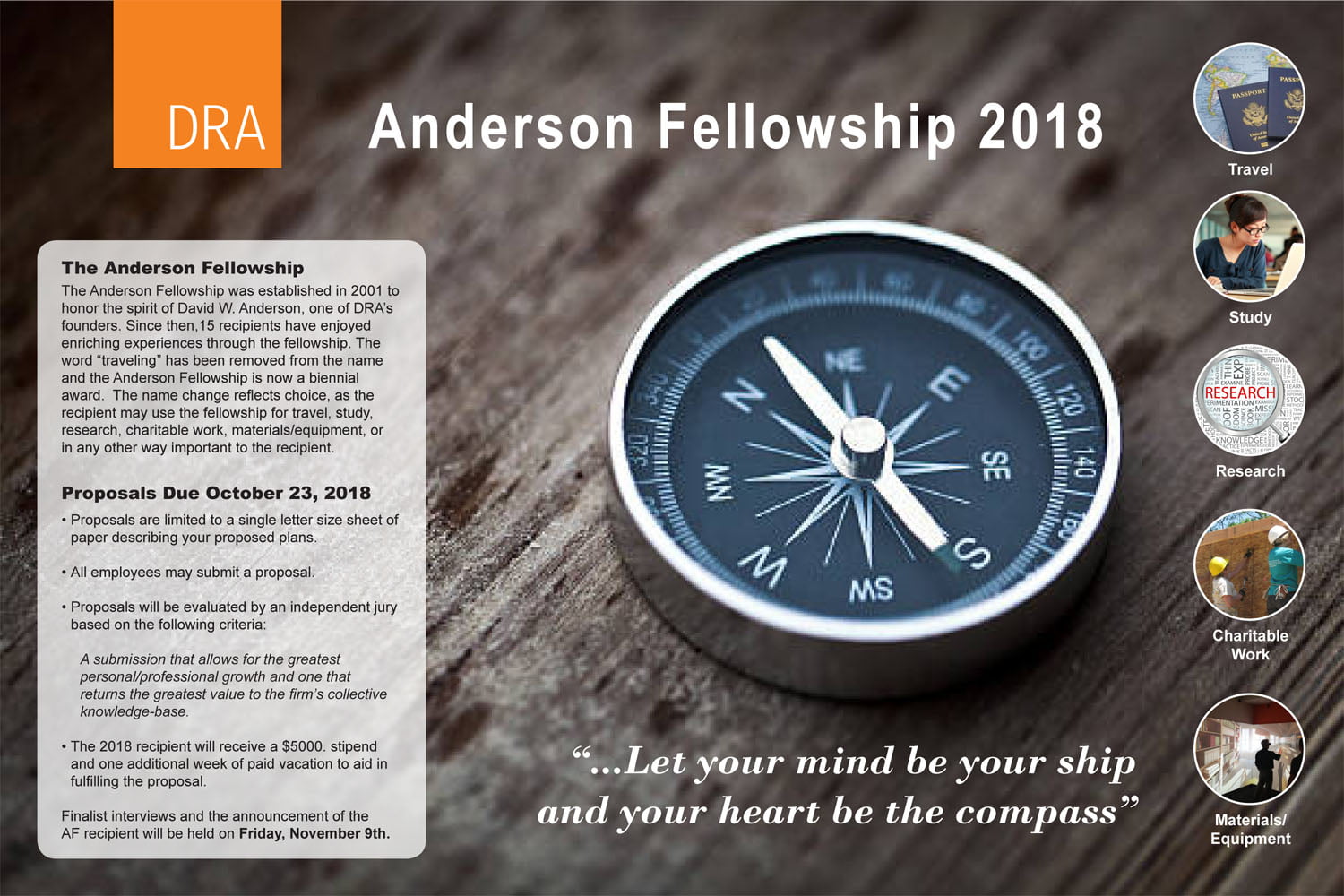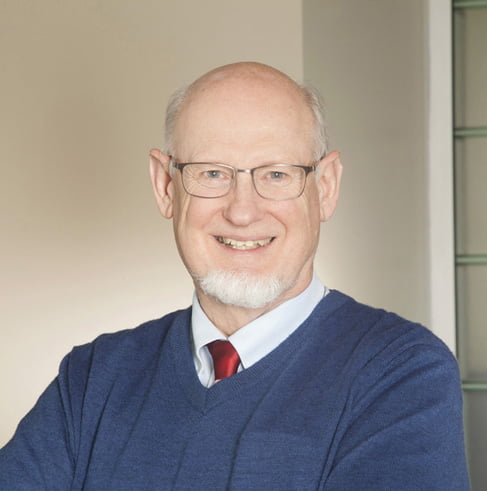Recipient of the 2018 Anderson Fellowship Announced
 For nearly 20 years, DRA has provided employees the opportunity to submit for the Anderson Fellowship. This award was created to honor the spirit of David Anderson, one of the founding partners of DRA who had a deep passion for travel. Every other year one staff member is awarded the Anderson Fellowship. The fellowship is awarded to the individual whose proposal demonstrates the greatest potential to support personal professional growth, while returning the greatest value to the firm’s collective knowledge. The winner of the fellowship receives a generous stipend, and an extra week of vacation to be used for one of six categories: travel, study, research, charitable work, materials, or equipment.
For nearly 20 years, DRA has provided employees the opportunity to submit for the Anderson Fellowship. This award was created to honor the spirit of David Anderson, one of the founding partners of DRA who had a deep passion for travel. Every other year one staff member is awarded the Anderson Fellowship. The fellowship is awarded to the individual whose proposal demonstrates the greatest potential to support personal professional growth, while returning the greatest value to the firm’s collective knowledge. The winner of the fellowship receives a generous stipend, and an extra week of vacation to be used for one of six categories: travel, study, research, charitable work, materials, or equipment.
 This year eight proposals were submitted by the staff. Four finalists presented their ideas to the guest selection-committee panel (pictured above from left to right: P.J. Roscoe, Secil Yakin, Chuxin Zhang, and Alan Johnson). After careful consideration the panel selected designer, Alan Johnson as the recipient of the 2018 Anderson Fellowship. Alan’s proposal focuses on the use and application of drones in architectural practice. He proposes researching drone types and options, obtaining his Remote Pilot Certificate and registering with the FAA, as well as attending upcoming conferences focusing on professional drone use, all with the intent of becoming our in-house expert on drone use. Alan envisions that drone use will benefit DRA in applications during site analysis, topography mapping, facility assessments, construction administration, and for marketing purposes.
This year eight proposals were submitted by the staff. Four finalists presented their ideas to the guest selection-committee panel (pictured above from left to right: P.J. Roscoe, Secil Yakin, Chuxin Zhang, and Alan Johnson). After careful consideration the panel selected designer, Alan Johnson as the recipient of the 2018 Anderson Fellowship. Alan’s proposal focuses on the use and application of drones in architectural practice. He proposes researching drone types and options, obtaining his Remote Pilot Certificate and registering with the FAA, as well as attending upcoming conferences focusing on professional drone use, all with the intent of becoming our in-house expert on drone use. Alan envisions that drone use will benefit DRA in applications during site analysis, topography mapping, facility assessments, construction administration, and for marketing purposes.
Congratulations to Alan Johnson!
A special thank you to this year’s selection-committee panel: Julie Miller, High School Principal, Stoughton Public Schools; T.J. Recupero, Chairman, Stoughton High School Building Committee; and, Karen Bishop Associate Executive Director, The Learning Center for the Deaf.
 After the 2018 winner was announced, Paul Moore, the AF’16 recipient, presented his 2016 Anderson Fellowship proposal that involved research: “A Method for Evaluating and Rating Classrooms.” Understanding that DRA has designed hundreds of school environments, Paul wanted to know if the completed designs improve learning for students. Paul chose to focus on three areas that could be easily measured within classrooms, which are directly affected by building design: ventilation, noise, and lighting. The measurement tools were relatively inexpensive ($100 or less each), and easy to use.
After the 2018 winner was announced, Paul Moore, the AF’16 recipient, presented his 2016 Anderson Fellowship proposal that involved research: “A Method for Evaluating and Rating Classrooms.” Understanding that DRA has designed hundreds of school environments, Paul wanted to know if the completed designs improve learning for students. Paul chose to focus on three areas that could be easily measured within classrooms, which are directly affected by building design: ventilation, noise, and lighting. The measurement tools were relatively inexpensive ($100 or less each), and easy to use.
- The Autopilot ($102) is designed to monitor a variety of conditions in a greenhouse, including relative humidity and temperature. This tool allows assessment of CO2 levels within a learning space. Maintaining appropriate CO2 levels is a key environmental element effecting student attention and cognition.
- The Kasuntest Sound Level Meter, KT-202 ($35) is easy to use, just power it up and it continuously reports on the large screen what it senses. Controlling classroom noise, and ambient sound can be a critical element in a student’s capacity to hear and retain information, especially in younger-aged students.
- Cine Meter II ($22.45), an app running on the iPad, measures the color temperature of light (degrees Kelvin, K). Studies show that the light we experience can influence our wakeful periods and attentiveness.
- Urceri MT-912 Light Meter ($20), measures light in foot-candles (FC). Light, both artificial and natural, is a key component of a successful classroom environment. Understanding light levels, and variances within the classroom environment are key components in successful planning of educational environments.
Paul visited two DRA designed schools, and using the devices, he measured the output of several rooms in each school. He discovered that in all three categories, the measurements taken were found to be at efficient levels for the educational environment. These findings, and new measuring devices, will continued to be used by DRA in future projects.

